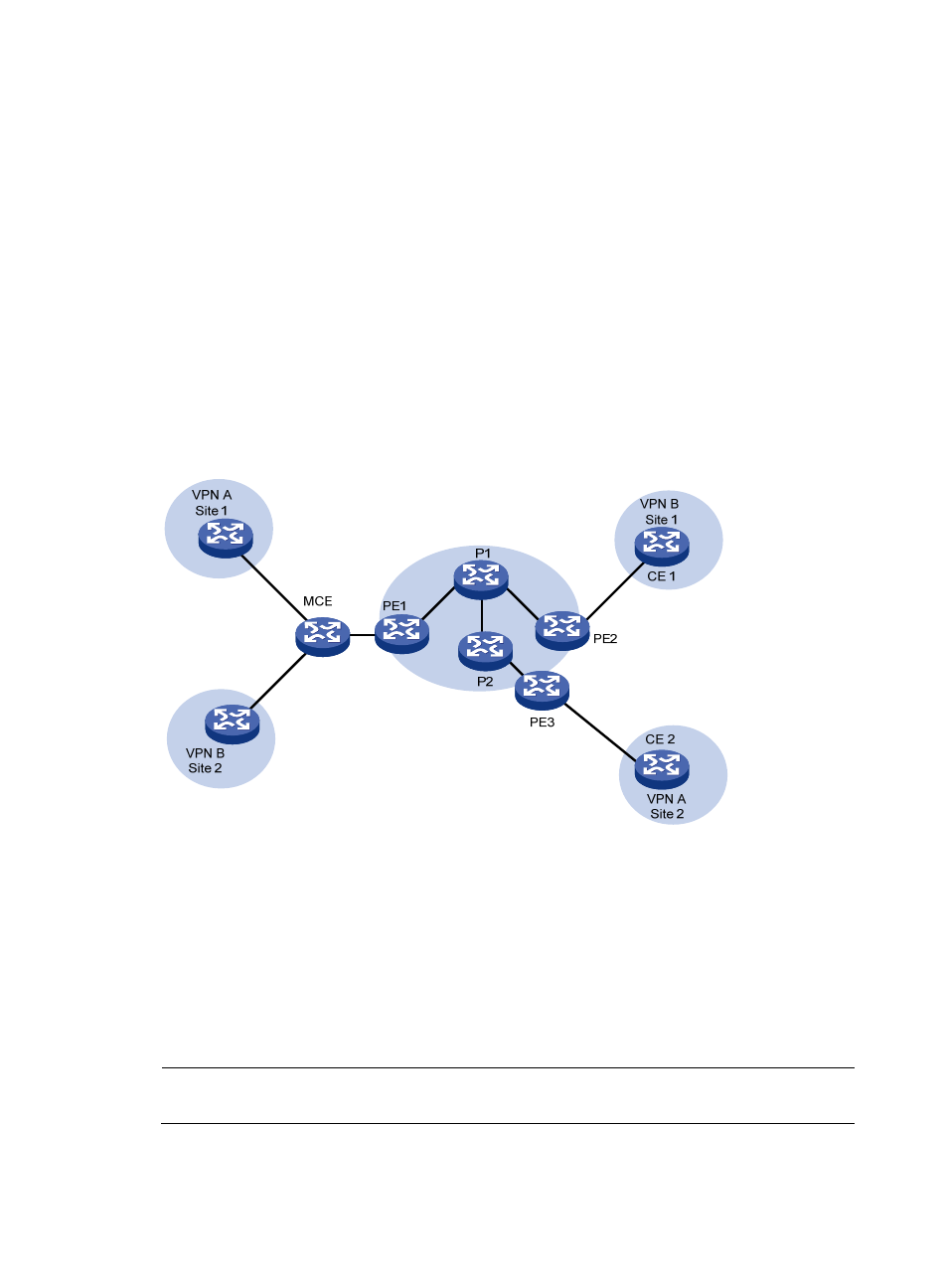Multicast support for vpns, Introduction to vpn instances – H3C Technologies H3C S12500-X Series Switches User Manual
Page 22

12
incoming interface. The RPF check result determines whether the packet will be forwarded or
discarded. The RPF check mechanism is the basis for most multicast routing protocols to implement
multicast forwarding.
For more information about the RPF mechanism, see "
Configuring multicast routing and forwarding
" and
"
Configuring IPv6 multicast routing and forwarding
Multicast support for VPNs
Multicast support for VPNs refers to multicast applied in VPNs.
Introduction to VPN instances
VPNs must be isolated from one another and from the public network. As shown in
, VPN A and
VPN B separately access the public network through PE devices.
Figure 10 VPN networking diagram
•
The provider (P) device belongs to the public network. The customer edge (CE) devices belong to
their respective VPNs. Each P device and CE device serves its own VPN and maintains only one set
of forwarding mechanisms.
•
The multi-VPN-instance customer edge (MCE) device connects to the VPNs and PE devices and
serves multiple VPNs. Different VPN instances for VPNs can be created on the MCE device to
separately maintain their forwarding tables.
•
The provider edge (PE) devices connect to the public network and the VPNs and serve multiple
networks. Multiple instances can exist on the same PE device. On a PE device, the instance for the
public network is called the public network instance, and those for VPNs are called VPN instances.
NOTE:
The switch can acts as MCE or CE device.
- H3C S9800 Series Switches H3C S5560 Series Switches H3C S5130 Series Switches H3C S5120 Series Switches H3C S12500 Series Switches H3C SR8800 H3C SR6600-X H3C SR6600 H3C WX6000 Series Access Controllers H3C WX5000 Series Access Controllers H3C WX3000 Series Unified Switches H3C LSWM1WCM10 Access Controller Module H3C LSWM1WCM20 Access Controller Module H3C LSQM1WCMB0 Access Controller Module H3C LSRM1WCM2A1 Access Controller Module H3C LSBM1WCM2A0 Access Controller Module
